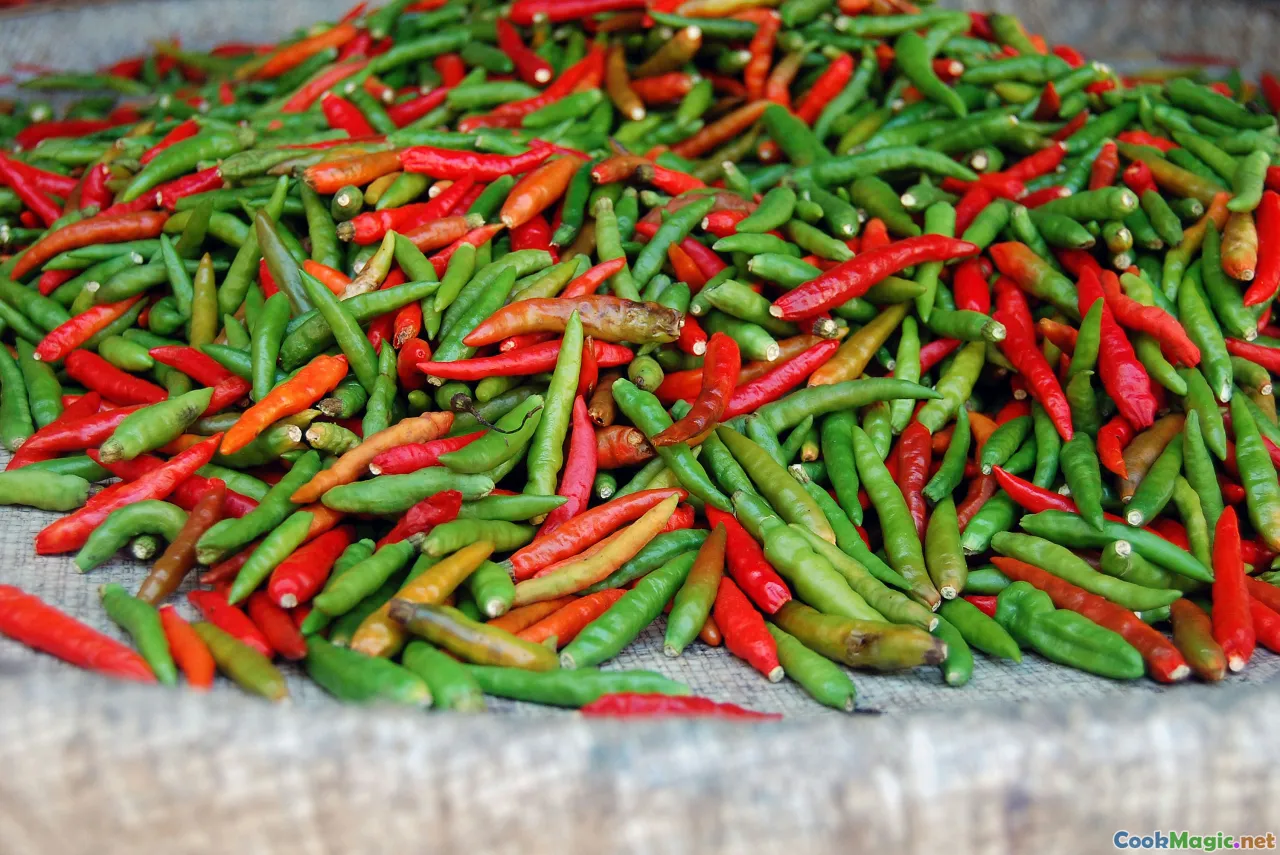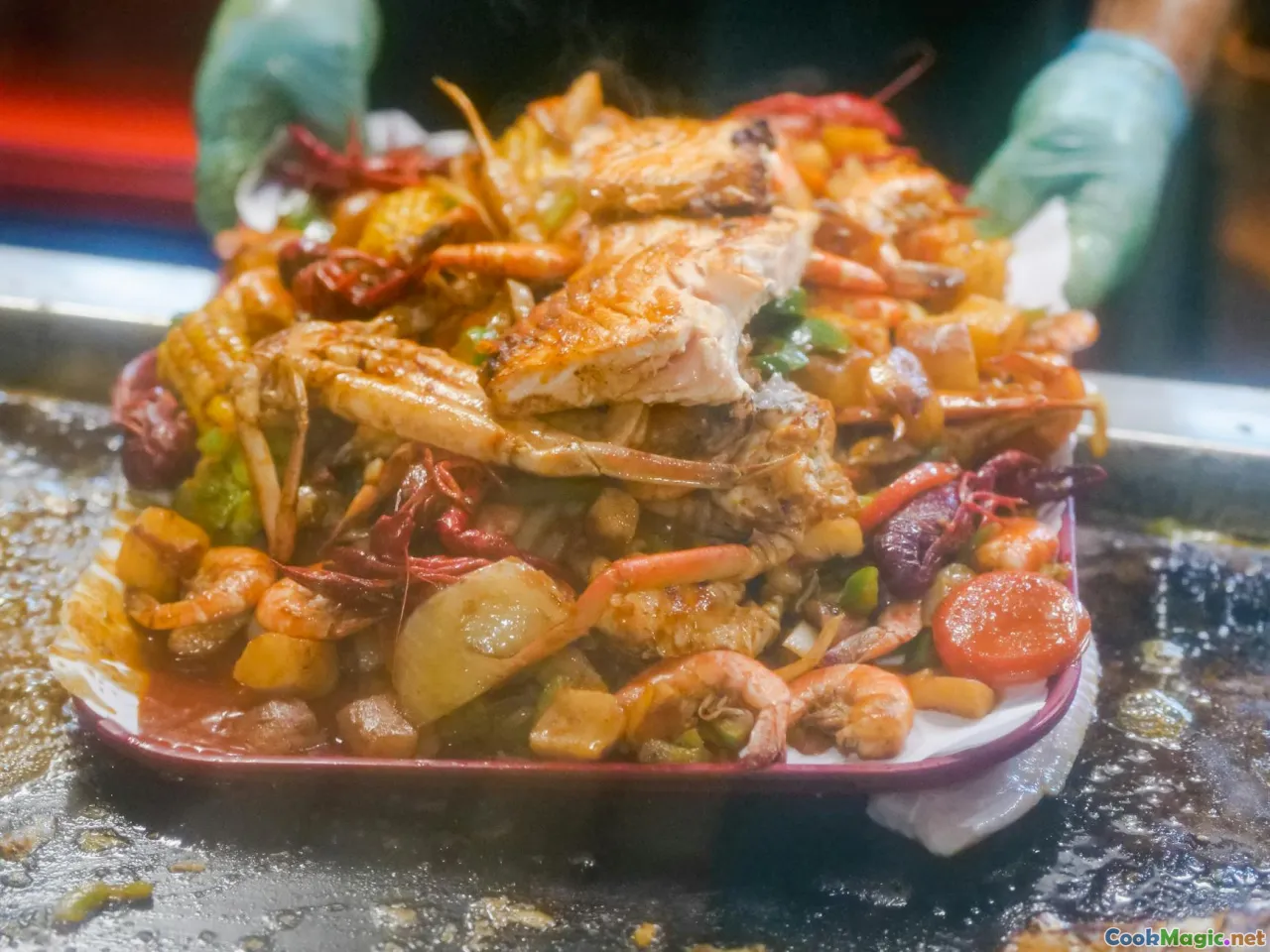Spicy Flavors of Tongan Chili Pepper Dishes
11 min read Explore the fiery and flavorful chili pepper dishes that define Tongan cuisine, showcasing bold spices and rich culinary traditions. September 27, 2025 09:05
Spicy Flavors of Tongan Chili Pepper Dishes
The vibrant islands of Tonga are not only celebrated for their breathtaking lagoons, lush landscapes, and rich cultural tapestry but also for their bold culinary expressions. Among these, the fiery embrace of Tongan chili peppers stands out as a hallmark of the island's flavor profile. For those daring enough to explore culinary adventures rooted in tradition, Tongan cuisine offers a tantalizing blend of heat, freshness, and timeless richness that tells stories of history, environment, and community coming together—spiced with passionately cultivated chili peppers.
The Heartbeat of Tongan Spiciness: Understanding the Chili Pepper Varieties

Tonga’s love for spicy flavors begins with its small, fiery chili varieties, primarily the Bird's Eye Chili(Capsicum frutescens). Known locally as**‘Ala’ala’**, these slender, crimson peppers are akin to the Latin American bird's eye chili, packed with an astonishing heat that can turn a simple dish into a fiery feast.
Unlike the more dulcet chili varieties common in other parts of the Pacific, Tongan peppers are revered for their pungency. They’re often harvested fresh from backyard gardens or local farms, where the tropical sun matures them to bright, glossy red. Their sharp aroma—a combination of vibrant citrus and herbal hints—announces itself loudly in the kitchen before the first bite.
The cultivation of these peppers is deeply embedded in Tongan agriculture, making them a symbol of local resilience and resourcefulness. Traditionally, families grow their own plants, passing down cherished seeds that have been cultivated for generations.
The Cultural Significance of Spicy Flavors in Tonga

In Tonga, food is more than sustenance; it’s a language of hospitality, identity, and communal celebration. The inclusion of chili peppers in dishes is an act of sharing not only heat but also cultural resilience. Spices heighten the senses, forging bonds when families gather around steaming bowls of Ota ika (raw fish marinated in lemon and chili) or lively communal feasts.
Historically, the use of chili was influenced by centuries of trade and contact with Polynesians from other islands and more distant nations. This exchange created a flavor palette that’s both uniquely Tongan and globally intertwined. The fiery chili on a special occasion—notably during celebrations like the ‘Ikale Tongan or the To’akitanga (traditional honor)—serves as a symbol of strength and vitality.
Classic Dishes Elevated by Chili Power
1. Ota Ika – Fish Ceviche with a Kick

Imagine pristine, cube-shaped raw fish marinated in freshly squeezed lemon and lime, infused with slices of fiery bird’s eye chili, freshly grated coconut, and a variety of tropical herbs. Ota Ika embodies the island’s reverence for fresh seafood and the fiery zest that awakens the palate.
The heat intensity varies depending on the chef’s hand—sometimes fiery enough to make one reach for a sip of coconut water, other times subtle enough to allow the fragrant fish to shine through. The chili’s heat is perfectly balanced by the acidity and the coolness of the coconut, creating a harmonious dance of flavors.
2. Lu Pulu – Potato and Tuna Roll with a Spicy Heart

Another traditional staple that benefits from chili’s fiery touch is Lu Pulu, where shredded baked taro leaves and potatoes are often combined with tuna and sprinkled generously with chopped chili peppers. When cooked, the chili releases a smoky heat that seeps into the mix, elevating humble ingredients into a bold celebration of flavors.
3. Tongan Chicken Curry—A Spicy, Aromatic Classic

Tongan adaptation of the curry features tender chicken simmered in a spiced coconut milk gravy infused with crushed bird’s eye chilis, turmeric, and local herbs. The final dish boasts a vivid orange hue, a fragrant aroma of spices mingling with a mouth-burning heat. Usually served with steamed taro or cassava, it’s both comforting and invigorating.
The Art of Balancing Heat and Flavor

Culinary mastery in Tonga often lies in balancing intense spiciness with the delicate flavors of seafood, root vegetables, and tropical fruits. Chefs and home cooks alike recognize that chili’s power must be harmonized with elements like coconut milk, lime, taro, and onions.
For example, a typical Keke (seafood stew) might feature a fiery chili paste stirred into a rich tomato base, tempered with the sweetness of ripe taro or breadfruit. The skilful use of chili doesn’t just add heat; it elevates the overall depth, creating layers of flavor that invite repeated tasting.
Practical Tips for Incorporating Tongan Chili in Your Cooking

- Start Small, Then Build: If you’re new to the heat, add chopped bird’s eye chili gradually, tasting as you go. Remember, the spice’s intensity can be overwhelming but also adjustable.
- Balance Is Key: Pair fiery chili with cooling ingredients like coconut, lime, or fresh herbs. This creates a delightful contrast that remains true to Tongan flavor harmony.
- Use Freshness: Dried chili peppers lack the vibrancy of fresh peppers. Whenever possible, use freshly picked or prepared peppers for maximum flavor and heat.
- Mample and Mingle: Let your chili-infused dishes sit for a few minutes after cooking to allow flavors to meld. The heat intensifies subtly as the dish rests.
The Personal Touch: Embracing Spicy Tongan Traditions

Cooking with chili in Tongan households isn’t just about flavor; it’s about community and tradition. Often, families gather to prepare and share spicy dishes, passing down recipes that have been honed over generations. This act fosters a sense of cultural identity and pride, making each meal a story in itself.
Some families have secret chili blends or special ways of preparing Ala’ala’, fiercely guarded like heirlooms—adding magic to their dishes. For visitors, joining in these communal feasts provides an immersive understanding of Tongan hospitality, where warmth is celebrated through fiery flavors.
Exploring Spicy Tongan Cuisine Beyond the Islands
As interest in Pacific culinary diversity grows globally, chefs worldwide are beginning to reinterpret Tongan chili dishes, incorporating elements of their own cuisines. From spicy tuna tartares with a dash of Ala’ala’ to fusion curries blending Polynesian and Southeast Asian spices, the fiery spirit of Tonga’s peppers is inspiring new gastronomic adventures.
Yet, the core remains the same: a celebration of vibrant, authentic flavors that tell stories of the land, sea, and people—passionately piqued by the igniting power of chili.
In embracing these robust flavors, we do more than taste. We connect—to history, culture, and the unifying fire of shared culinary passion. So next time you reach for that bottle of hot sauce or slice into a fiery chili, remember—the heat of Tongan peppers is a tribute to a vibrant island spirit that refuses to be silenced, only ignited.
Whether you’re a spice novice or a seasoned heat lover, Tongan chili dishes offer a journey into a culture that uses their fiery peppers as a language of tradition, resilience, and exuberance. Take a leap into their world, and let those bold, spicy flavors enrich your culinary story—one fiery bite at a time.









